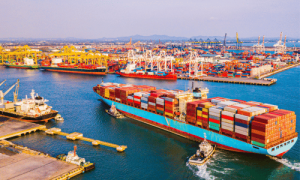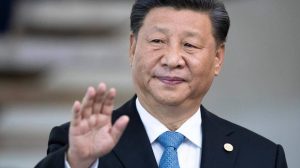2012 was hailed as a big year for the Australia-China relationship, but will be remembered instead as a year of missed opportunities, writes Rowan Callick.
The 40th anniversary of Australia’s diplomatic recognition of the People’s Republic of China on December 21 failed to produce the VIP visits that some had anticipated – perhaps because 2012 proved such a sour year in many ways for political leaders in both countries, with the Bo Xilai scandal in China and countless conflicts in Canberra.
Instead the anniversary triggered something maybe more valuable: a wave of dialogue meetings between Australians and Chinese, which pursued the ambition for stronger relationships in line with the Gillard government’s Asia white paper – and with a growing quorum of people from both countries in the business, academic and other worlds who worry lest we let opportunities slip through our hands.
In November, I participated in two such forums, as did Australia China Business Council president Frank Tudor. At the first, in Beijing, we were among 19 Australians, including former foreign minister Gareth Evans, business leaders Catherine Tanna of BG Australia and Trevor Rowe of Rothschild Australia, Canberra MP Andrew Leigh and Group of Eight universities’ chief Mike Gallagher. Richard Rigby represented the host Australian organisation, the China in the World Centre at the Australian National University.
The Chinese team included Li Zhaoxing, the chairman of the foreign affairs committee of the parliament and a former foreign minister, Zhou Wenzhong, the head of the Boao Forum, Tang Maoheng, a senior manager at the Bank of China, Fang Quichen, North America and Oceania head of the Commerce Ministry, Zhou Dadi, the National Development and Reform Commission’s leading energy expert, and Wang Hui, China Daily’s international opinion editor.
Our hosts in Beijing were the Chinese People’s Institute of Foreign Affairs – the Foreign Ministry’s think-tank. The event, coincided intriguingly with the revelation at the nearby Great Hall of the People of the new Politburo Standing Committee members, and we naturally adjourned to watch it – on Hong Kong-based Phoenix TV as it happened.
The knack in making such events, and relationships, succeed, is to take on two apparently contradictory tasks: to build on shared interests, and to open a dialogue on points of conflict.
Easier visa access, internships for students and new graduates, working holiday access for young people,
enhanced military connections, more direct payments between the Aussie dollar and the renminbi, were among the ideas that received general support.
enhanced military connections, more direct payments between the Aussie dollar and the renminbi, were among the ideas that received general support.
Then on November 23 the Chinese ambassador in Canberra, Chen Yuming, hosted a forum too –including his most senior colleagues at the embassy, and economist Peter Drysdale, a member of the Asia white paper panel, Tim Lane, Rio Tinto’s chief China adviser, Brendan Taylor, head of the strategic and defence studies centre at the Australian National University, and my colleague David Uren of The Australian, author of The Kingdom and The Quarry, the key book on contemporary Australia-China relations.
Ambassador Chen made an especially important contribution, conveying a message which we ignore at our peril: that China should not be reduced in Australians’ perception to an “economic country” or to a “market,” and that while business will remain the core shared interest between us, Chinese people are not only “businesspeople.”
The Asia white paper that was published in October reinforced the focus on China, one of the key relationships underlined in the report – although it avoided treating China as a proxy for the whole region. This had become a common tendency which helps neither Australia nor China, placing too much weight at this time on what will always be a rather different type of relationship, at the governmental level, from that between countries which share institutional frameworks.
We were reminded of the core common interest that links us, with the 25th anniversary in December of the Channar joint venture – an event marked by the launch in Beijing of a book which I was invited to write on the project, an occasion when the deep human importance of this relationships was palpable.
This is the iron ore mine in the Pilbara in Western Australia in which Chinese trading giant Sinosteel, exhibiting considerable political courage at the time, took a 40 percent stake with partner Hamersley Iron, owned by Rio Tinto. Two years ago the companies concluded a long negotiation to extend their joint venture to extract a further 50 million tonnes of ore, over about five years.
Channar set the pattern for Chinese government investment approvals processes, and thus a crucial pace-setter for the more recent wave of Chinese investment, says Robin Chambers, who has been a legal advisor to Sinosteel throughout the mine’s life.
If it had become a failure, the history of Chinese dealings with Australia might have been very different. It is an economic success which has added value in other arenas too. Many top Chinese government leaders and heads of China’s steel industry have visited there, some have trained there. The Chinese often refer to it when they are doing deals. It gave Hamersley, and Pilbara style ores, a unique entrée into the Chinese iron and steel business.
A Sinosteel negotiator for the original deal, Yan Deshun, who went on to live in Western Australia for several years as chief representative, said: “The consequences of our lengthy negotiations were a rich mutual understanding. I and my colleagues all put our very best into this project. So did our counterparts such as Ian Bauert (now Rio’s head in China). I always wear my Hamersley tie…”
The ultimate destination of Australian ore and enterprise is to be found in many of the products – and indeed the houses and cars – that China’s new middle class is consuming.
In October I spent some time in Shanghai talking with people from this segment of China’s population that is already about 300 million strong – those who earn about $10,000 to about $60,000 per year – and which has been growing by an incredible 10 percent per year. That computes to about one new graduate into the Chinese middle class every single second.
These are not people who are crazy spenders by any means. Their incomes are often under considerable pressure, on one side from mortgages and school fees and looking after ageing parents, on the other from increasing government taxes and imposts.
But they are mostly on balance optimistic about their future, and confident about China’s capacity to continue growing healthily. How they think and consume and behave will substantially determine how the Australia-China relationship evolves from here on.
That provides Australia with a great challenge – ensuring it maintains and preferably steadily increases its ore sales, while also graduating to provide the very varied members of this vast emerging middle class with consumer goods and services they are rapidly seeking.
The year 2012 has seen an increasing amount of constructive conversations. Maybe the Year of the Snake, 2013, will rouse the relationship to step up a gear, into transformative action. ■
*Rowan Callick is the Asia Pacific Editor for The Australian newspaper and has held numerous posts in China, Hong Kong and the region during his 20+ year career as an award winning journalist.

















